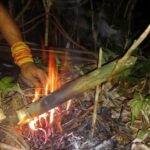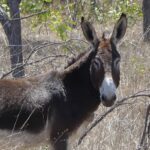Freshwater seepages occur along drainage lines on beaches, where the water table meets the sea. These seepages are fed by freshwater supplies from inland, and the land beyond the sea is naturally higher than sea level, causing freshwater to flow into the sea.
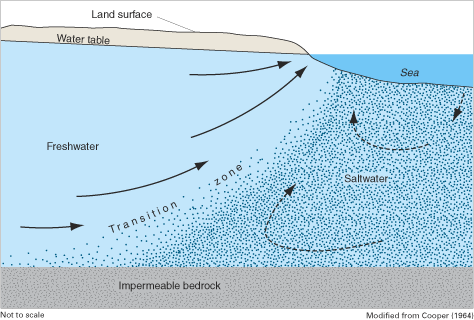

Beach groundwater dynamics
The line on the shore where the water table is in equilibrium between pore water pressure and atmospheric pressure is called the Mean Water Surface (MWS). At this line, pore water (freshwater) flows into the sea. However, the MWS does not always coincide with the freshwater exit point, as the MWS is significantly lower than the exit point at low tide. This is the time and place where we can observe freshwater seeping into the sea.
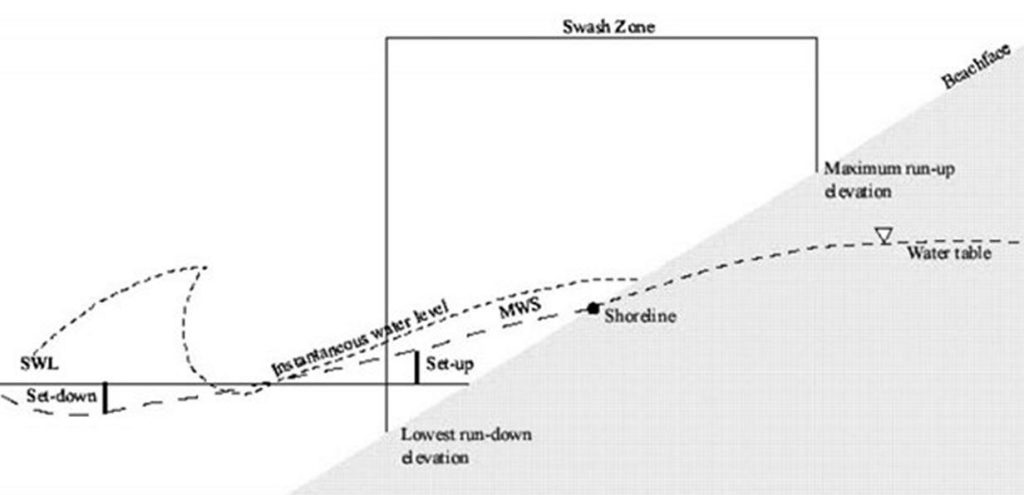
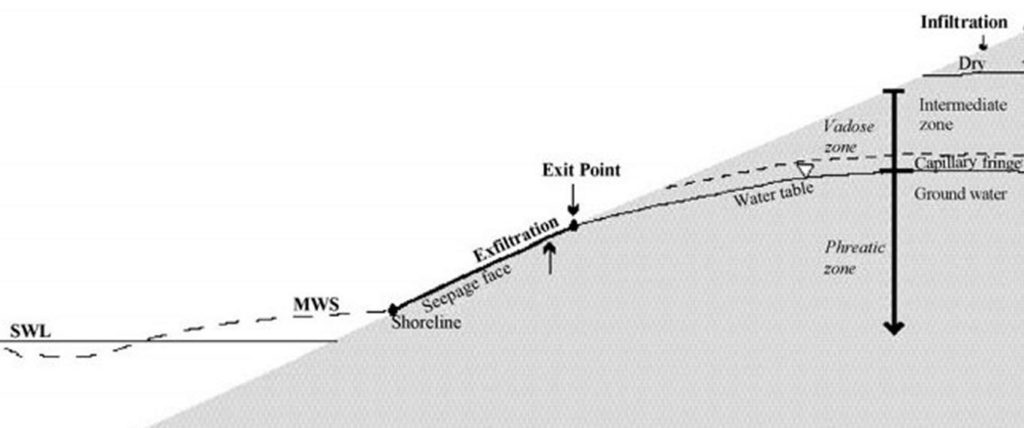
D. Horn described this beach’s groundwater dynamics in detail, and both figures were taken from her article covering this investigation.
How to collect freshwater?
The best time to dig into the sand to collect pore freshwater is at receding tide, well above the exit point. Dig up a hole, reinforce its sidewalls with hard and flat objects like wooden planks and stones, and let the freshwater seep in. The first water influxes should be removed, as they will contain lots of salts from the seawater. If the water remains brackish and undrinkable, move further behind the swash zone and dig a deeper hole.
Wetlands behind barrier dunes
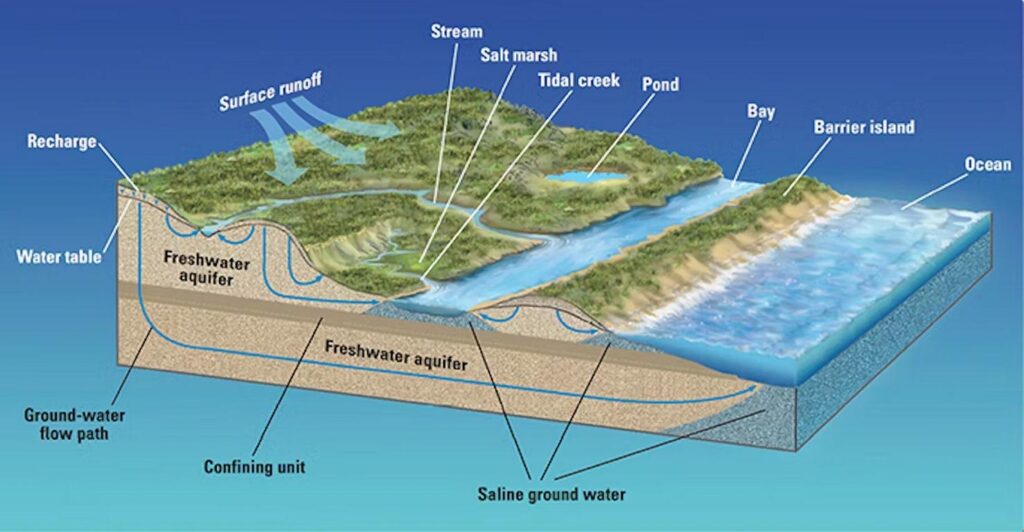
If no drainage line or seepage is found on the beach, the next best bet is to dig at the depression behind the first dune, called the barrier dune. The freshwater aquifer fed from the runoff from the backside of the barrier dune and inland often results in wetlands containing freshwater.
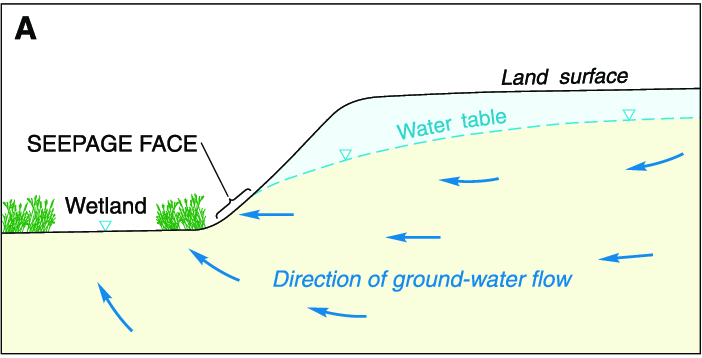
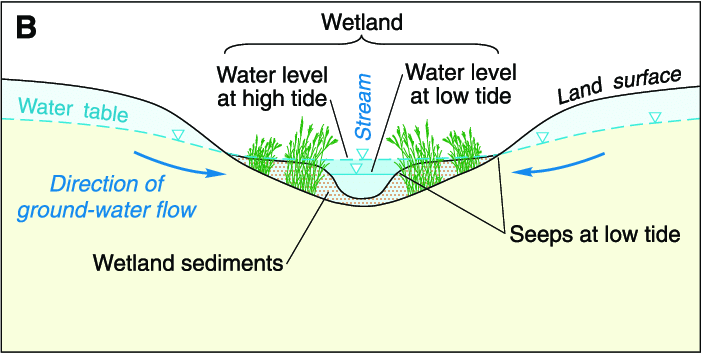
Figures: Conceptual model of seep and spring formation in wetlands at (A) the edge of the wetlands and (B) at low tide (modified from Winter and others, 1998); published by USGS at this report here.
Algae growth in freshwater rills
Freshwater seepages at low tide on sand beaches are often marked by algae growth. Green algae are the most common, but red algae have also been observed. Researchers have studied this phenomenon and measured high nutrient concentrations in beach porewaters from inland. This has led to such algae growth. See here.
Before you start digging holes, try other water-finding methods
The initial search ashore for water will be governed by terrain and the human condition. A weakened castaway will be unable to dig a deep seepage well. But with a bit of surveying, this may prove unnecessary anyway. Much will depend on the type of ground.

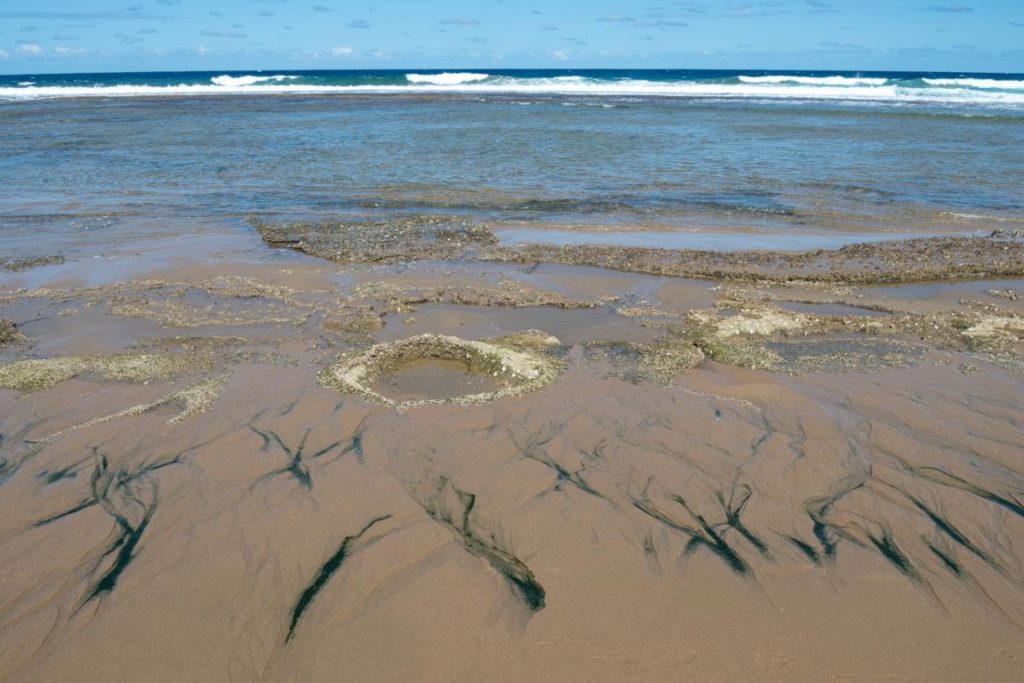
Before digging holes, other water-finding methods should be tried. Look for natural or unnatural containers, such as old drums above the high tide line or cracked open coconut shells holding liquid. A depression in the ground whose bottom has been sealed by grass and natural debris is also a good bet. Do not disturb any containers found, lest their qualities as catchment vessels be disturbed.
If no open freshwater sources are found, collecting fresh water from seepages on sandy beaches is the next best way to improve survival in a desperate situation.
Lessons learned from collecting freshwater on beaches:
- Freshwater seepages from below the groundwater table can often be found on sandy beaches at low tide.
- The best location for digging a seepage hole is well above the exit point on receding tide.
- A deeper hole has to be dug above the swash zone to reach fresh water.
- The next best possibility for finding fresh water is digging at the wetland depression behind the barrier dune.
- Seepage lines on the beach are often conspicuous by their algae growth.
.



